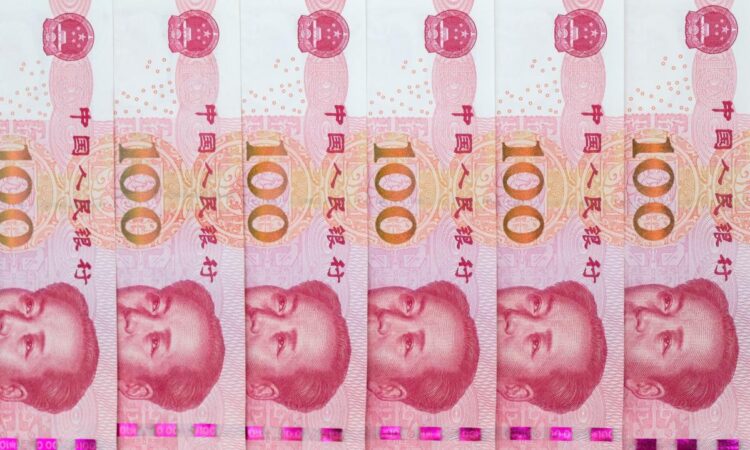
(Bloomberg) — China’s tentative loosening of its vise-like grip on the yuan unleashed a slide in the currency and pulled down its Asian peers along the way.
Most Read from Bloomberg
The onshore yuan dropped the most in more than two months after the authorities set a weaker-than-expected daily fixing, fueling speculation they would tolerate further losses. The decline took the currency to within 0.2% of the end of its allowed daily trading band of plus or minus 2% from the fixing.
The softening in Beijing’s stance underscores the challenges policymakers face as they try to stimulate a fragile economy through monetary easing, while also keeping the yuan broadly steady to prevent capital outflows. A decision to loosen control wouldn’t be straightforward however as the People’s Bank of China will need to maintain some support to make sure the depreciation is orderly and doesn’t endanger financial stability.
The renewed weakness in the yuan, after it had largely flat-lined for nearly two months, has implications beyond China’s foreign-exchange market. A sudden or sustained slide may weigh on regional peers already under pressure from a buoyant dollar. It would also make the nation’s struggling stock market even less appealing to overseas investors.
The declines in the yuan may have been “triggered by the weaker fix,” said Fiona Lim, a senior foreign-exchange strategist at Malayan Banking Bhd in Singapore. That sent a signal the “PBOC is willing to allow some weakness in the yuan as the dollar has gained a bit of a bullish bias recently,” she said.
The onshore yuan slid as much as 0.4% to 7.2299 per dollar Friday, breaching the 7.2 level that policymakers had been defending for months. The tumble came after the PBOC lowered its daily fixing by the most since early February.
The currency was also driven lower as state banks refrained from selling dollars in large amounts at the market open, traders said. Sentiment was further soured after PBOC Deputy Governor Xuan Changneng said Thursday the nation still has room to lower the reserve-requirement ratio for banks, a move that may further widen the US-China monetary policy divergence.
“The aggressive market reaction immediately after a slight scaling back of the strengthening bias may lead to a more cautious move ahead,” said Becky Liu, head of China macro strategy at Standard Chartered Bank. “The PBOC may need to step up foreign-exchange management in the near term.”
Adding to the bearish sentiment surrounding the yuan is a proposed bill being considered by the US Congress — which still faces major hurdles to becoming law — that would block mutual funds from investing in some products that track Chinese stock indexes. Key equity gauges on the mainland slipped some 1% Friday
Renewed strength in the dollar is also hurting the yuan. The Bloomberg dollar index is set for its biggest weekly gain in two months. In the past few days, the yen also failed to get a boost from the Bank of Japan’s decision to exit its negative-interest-rate policy, a further sign of the dollar’s underlying strength.
“The hurdle for the PBOC to allow the dollar-yuan fixing to follow spot to move a little higher to 7.2 to 7.25 into the summer is not too high,” said Ju Wang, head of greater China foreign-exchange and rates strategy at BNP Paribas. “This could allow spot to test 7.3 again.”
Still, further and steeper losses in the yuan would increase the prospect of additional support from the PBOC, such as state bank selling of the dollar or verbal intervention. The central bank may also tighten liquidity in offshore markets to make betting against the currency more expensive.
Traders around the region are keenly watching moves in the yuan as it has long been considered an anchor currency. The Australian dollar and South Korean won — which are considered as proxies for China sentiment — both slumped at least 0.7% Friday.
“The yuan depreciation has negative spillovers to the low-yielding ones, such as the Korean won, Taiwan dollar and Thai baht,” said Lemon Zhang, a strategist at Barclays Bank in Singapore. “We would expect offshore yuan liquidity could tighten,” if bets against the currency accumulate further, she said.
–With assistance from Qizi Sun, Ran Li, Iris Ouyang, April Ma and Tania Chen.
Most Read from Bloomberg Businessweek
©2024 Bloomberg L.P.
